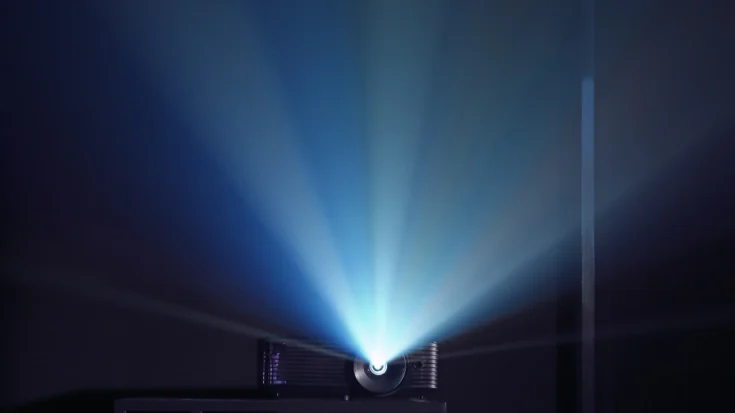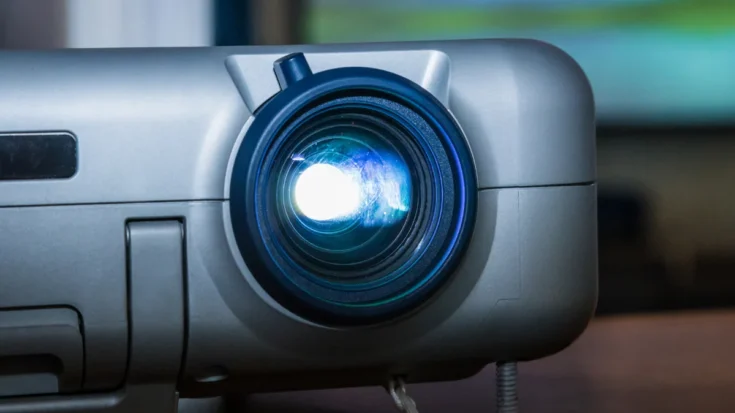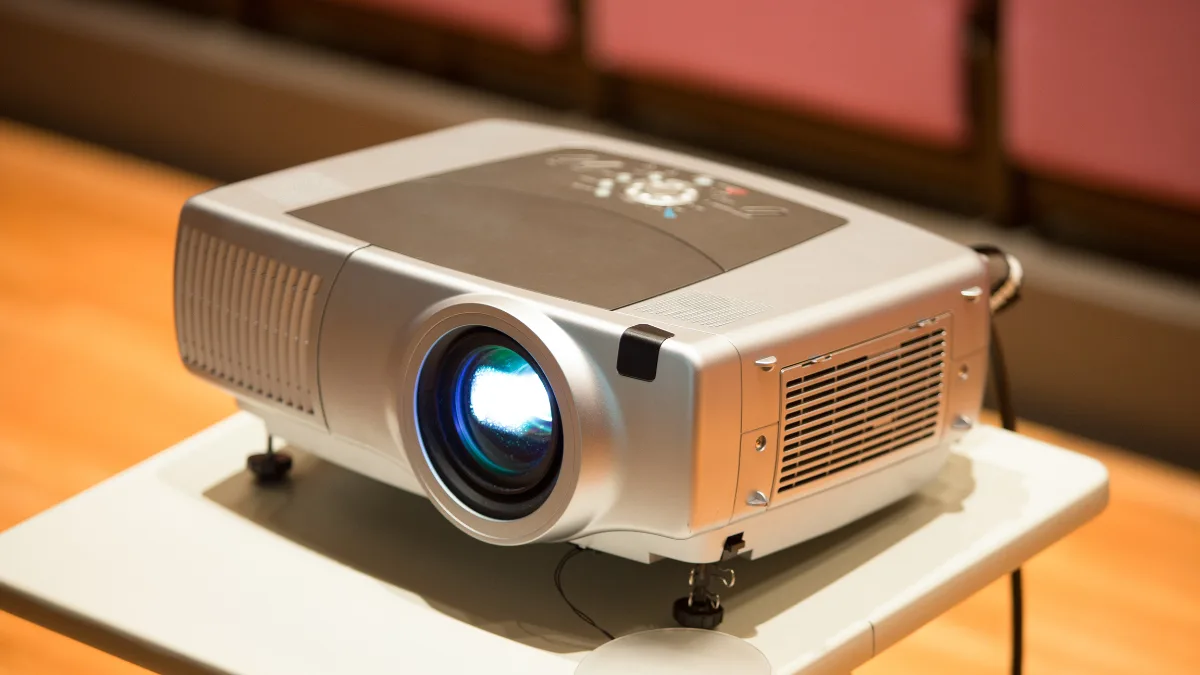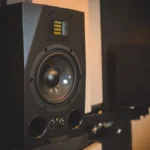Projectors are one of the devices that are quite needed in today’s technological advances. Devices that can display images, videos, or presentations with a much larger size to a flat surface are needed for various interests.
Projectors are much needed in the world of entertainment to display videos or watch together favorite soccer clubs in cafes. For presentation purposes, projectors are needed in the world of education and business.
But do you already know the history, workings, and types of projectors? In this article, we will review projectors from the definition, history, workings, and types.
Also Read
Table of Contents
What is a Projector?

Simply put, a projector is an optical device that receives video or image signals from an external source and then displays them on a larger surface.
Projector technology has continued to evolve rapidly over time and now comes in many different types with advanced features such as 4K projection, automatic keystone correction, and wireless connectivity.
Modern projectors are also increasingly user-friendly and can easily connect to various devices, such as laptops, smartphones, or gaming consoles.
Today, the use of the technology is not limited to classrooms or meeting rooms, but also for various other purposes, such as watching movies at home or enjoying outdoor entertainment.
History of Projector
The first LCD projector was invented by scientist Gene Dolgrof from New York. He started his work in college in 1968 intending to create a video projector, and in his vision, he planned to create an LCD projector that was brighter than the 3-CRT projector.
To realize this idea, he used an element called a valve light to regulate the amount of light passing through it. After trying various materials, in 1971, he finally settled on liquid crystal as the light regulator.
His struggle continued until 1984 when he succeeded in obtaining “addressable” technology for liquid crystal displays (LCDs), which allowed him to create the world’s first LCD projector.
How Projector Works

Light from the LCD panel is refracted
The projector has an LCD (Liquid Crystal Display) panel that controls light. When light from the projector’s lamp passes through this panel, it is bent by the liquid crystals, which are controlled by the video signal. This bending process creates the image that will be shown.
Light passes through a prism and lens
After the light is bent by the LCD panel, it travels through a prism. The prism helps combine the light colors (red, green, and blue) correctly, and then the light goes through a lens. The lens focuses and enlarges the image to make it clear and sharp on a larger surface.
Light is projected onto a screen or reflective surface
The light, now focused and enlarged by the lens, is projected onto a screen or any reflective surface. This is where the image appears bigger and brighter for everyone to see.
Our eyes see the light as an image
Finally, the light projected onto the screen is captured by our eyes. We see this light as a large image or video, allowing us to experience the content clearly on the screen.
The Types of Projector

Here are the different types of projectors that exist:
1. LCD projectors
LCD projectors are modern projectors that are a development of the previous projector, the Overhead Projector (OHP). In OHP, data is only written on transparent paper, while LCD can display images or videos with better quality.
2. Digital projector
Digital projectors are used to convert image data from a computer directly to the screen through a lens. These projectors are important in home theater systems and use technologies such as high-intensity CRT, light-gated LCD, and DLP from Texas Instruments.
3. CRT projectors
CRT projectors use picture tubes, similar to old TVs. Three CRT tubes display red, green, and blue colors on the screen. These projectors are larger and heavier due to the use of three color tubes.
4. LCOS projector
LCOS projectors combine the advantages of LCD and DLP technologies. They are lighter and faster to manufacture than LCDs, with better resolution, reaching 2048×1536 pixels.
5. DLP projectors
DLP projectors use microscopic glass on top of a semiconductor chip to create images. Light passes through a color filter and is reflected by the glass onto the screen to project the image.
Projector Regulations in Indonesia
Projector products sold in Indonesia must be certified by the Directorate General of Digital Infrastructure (DJID) under the Ministry of Communication and Digital (KOMDIGI). This is based on Ministerial Decree Number 260 of 2024 and Ministerial Decree Number 12 of 2025, which requires all radio frequency-based devices, including Projector, to meet specific technical standards before being sold in the country.
The certification ensures that the product meets government safety and quality regulations and does not interfere with other communication devices. The certification process involves technical testing, such as frequency adjustments, safety checks, and compatibility with the surrounding environment.
Once the tests are completed, products that pass are listed in a Test Result Report, which confirms that the product is safe and ready for sale in Indonesia. This report reassures customers that the product meets technical standards and is secure to use.
For companies wanting to sell a Projector in Indonesia, Type Approval Certification Services for ICT Products are available to assist with this process. This service includes preparing technical and legal documents, conducting required testing, ensuring compliance with regulations, helping companies streamline the certification process, and giving consumers confidence in certified products.











